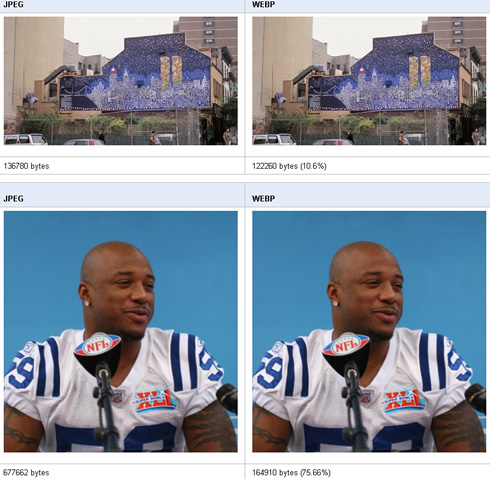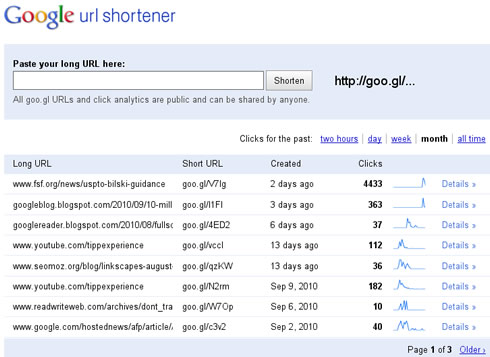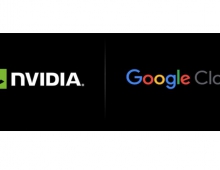
Google Unveils WebP Image Format For The Web, New Google URL Shortener
Google has released a developer preview of a new image format, WebP, that promises to significantly reduce the byte size of photos on the web. In addition, the company's the Google URL Shortener (goo.gl) has its own web site.
A JPEG replacement?
Google noticed a single component of web pages is consistently responsible for the majority of the latency on pages across the web: images. Most of the common image formats on the web today were established over a decade ago and are based on technology from around that time. Some engineers at Google decided to figure out if there was a way to further compress lossy images like JPEG to make them load faster, while still preserving quality and resolution. As part of this effort, Google is releasing a developer preview of a new image format, WebP, that promises to significantly reduce the byte size of photos on the web, allowing web sites to load faster than before.
Images and photos make up about 65% of the bytes transmitted per web page today. They can significantly slow down a user?s web experience, especially on bandwidth-constrained networks such as a mobile network. Images on the web consist primarily of lossy formats such as JPEG, and to a lesser extent lossless formats such as PNG and GIF. Google's team focused on improving compression of the lossy images, which constitute the larger percentage of images on the web today.
To improve on the compression that JPEG provides, Google used an image compressor based on the VP8 codec that Google open-sourced in May 2010. Google applied the techniques from VP8 video intra frame coding to push the envelope in still image coding. Google e also adapted a very lightweight container based on RIFF. While this container format contributes a minimal overhead of only 20 bytes per image, it is extensible to allow authors to save meta-data they would like to store.
While the benefits of a VP8 based image format were clear in theory, Google needed to test them in the real world. In order to gauge the effectiveness of our efforts, the company randomly picked about 1,000,000 images from the web (mostly JPEGs and some PNGs and GIFs) and re-encoded them to WebP without perceptibly compromising visual quality. This resulted in an average 39% reduction in file size. Google expecst that developers will achieve in practice even better file size reduction with WebP when starting from an uncompressed image.
WebP?s performance with other formats can seen on this site, where classic images along with file sizes have been posted online.
Google is e also releasing a conversion tool that users can use to convert images to the WebP format. While WebP images can?t be viewed until browsers support the format, Google is developing a patch for WebKit to provide native support for WebP in an upcoming release of Google Chrome.
For more information on webp and in order to download the new conversion tool, visit http://code.google.com/speed/webp/.

Google URL Shortener Gets a Website
Google introduced the Google URL Shortener (goo.gl) last December as part of Google Toolbar and Feedburner. Since the initial release, Google has integrated the technology into many other Google products including News, Blogger, Maps, Picasa Web Albums, and Moderator, but people have been asking for a direct way to use the service. Today Google is giving goo.gl its own website (http://goo.gl/).
Google has built goo.gl with a focus on quality. With goo.gl, every time users shorten a URL, theyr know it will work, it will work fast, and it will keep working. Users also know that when they click a goo.gl shortened URL, they're protected against malware, phishing and spam using the same technology Google uses in search and other products.
To access the new website and start taking advantage of these improvements, simply type "goo.gl" in your web browser and hit enter.
Users who sign-in to their Google Account will see a list of URLs they?ve shortened in the past. The "details" link next to any of shortened URL provides find public, real-time analytics data, complete with traffic over time, top referrers, and visitor profiles.
Google also plans to release an official API for goo.gl in the future. Developers will be be able to use the API to shorten URLs, expand URLs, and view analytics from directly within their own applications.

Google noticed a single component of web pages is consistently responsible for the majority of the latency on pages across the web: images. Most of the common image formats on the web today were established over a decade ago and are based on technology from around that time. Some engineers at Google decided to figure out if there was a way to further compress lossy images like JPEG to make them load faster, while still preserving quality and resolution. As part of this effort, Google is releasing a developer preview of a new image format, WebP, that promises to significantly reduce the byte size of photos on the web, allowing web sites to load faster than before.
Images and photos make up about 65% of the bytes transmitted per web page today. They can significantly slow down a user?s web experience, especially on bandwidth-constrained networks such as a mobile network. Images on the web consist primarily of lossy formats such as JPEG, and to a lesser extent lossless formats such as PNG and GIF. Google's team focused on improving compression of the lossy images, which constitute the larger percentage of images on the web today.
To improve on the compression that JPEG provides, Google used an image compressor based on the VP8 codec that Google open-sourced in May 2010. Google applied the techniques from VP8 video intra frame coding to push the envelope in still image coding. Google e also adapted a very lightweight container based on RIFF. While this container format contributes a minimal overhead of only 20 bytes per image, it is extensible to allow authors to save meta-data they would like to store.
While the benefits of a VP8 based image format were clear in theory, Google needed to test them in the real world. In order to gauge the effectiveness of our efforts, the company randomly picked about 1,000,000 images from the web (mostly JPEGs and some PNGs and GIFs) and re-encoded them to WebP without perceptibly compromising visual quality. This resulted in an average 39% reduction in file size. Google expecst that developers will achieve in practice even better file size reduction with WebP when starting from an uncompressed image.
WebP?s performance with other formats can seen on this site, where classic images along with file sizes have been posted online.
Google is e also releasing a conversion tool that users can use to convert images to the WebP format. While WebP images can?t be viewed until browsers support the format, Google is developing a patch for WebKit to provide native support for WebP in an upcoming release of Google Chrome.
For more information on webp and in order to download the new conversion tool, visit http://code.google.com/speed/webp/.

Google URL Shortener Gets a Website
Google introduced the Google URL Shortener (goo.gl) last December as part of Google Toolbar and Feedburner. Since the initial release, Google has integrated the technology into many other Google products including News, Blogger, Maps, Picasa Web Albums, and Moderator, but people have been asking for a direct way to use the service. Today Google is giving goo.gl its own website (http://goo.gl/).
Google has built goo.gl with a focus on quality. With goo.gl, every time users shorten a URL, theyr know it will work, it will work fast, and it will keep working. Users also know that when they click a goo.gl shortened URL, they're protected against malware, phishing and spam using the same technology Google uses in search and other products.
To access the new website and start taking advantage of these improvements, simply type "goo.gl" in your web browser and hit enter.
Users who sign-in to their Google Account will see a list of URLs they?ve shortened in the past. The "details" link next to any of shortened URL provides find public, real-time analytics data, complete with traffic over time, top referrers, and visitor profiles.
Google also plans to release an official API for goo.gl in the future. Developers will be be able to use the API to shorten URLs, expand URLs, and view analytics from directly within their own applications.





















